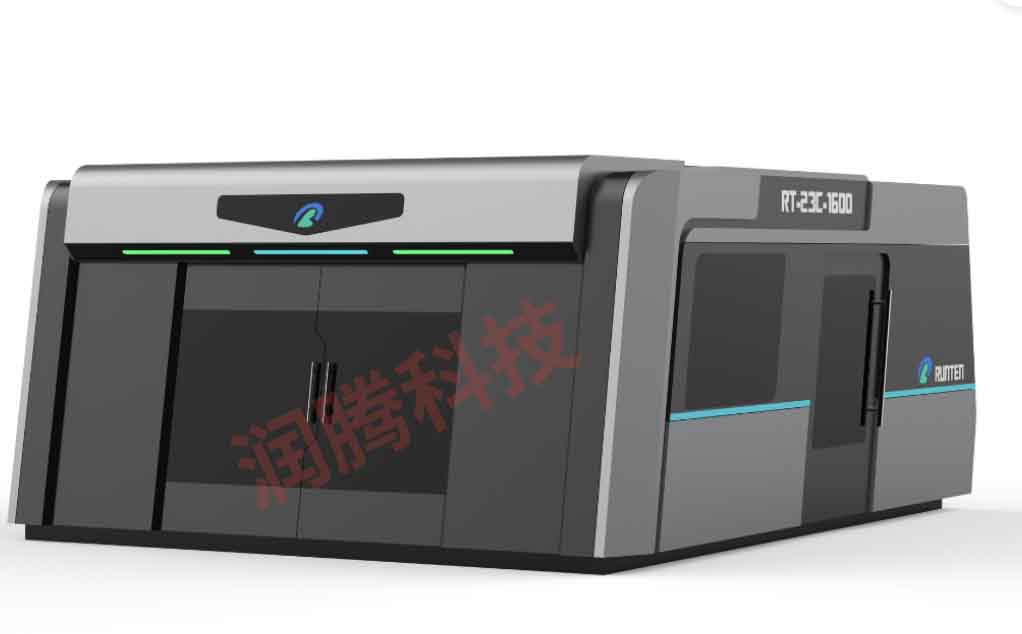Revolutionize Your Manufacturing Process with Advanced Slitting Machine Technology| China runcheng
 Jul 15, 2024|
Jul 15, 2024| View:59
View:59I. Slitting Machine Concept
A. Overview
The Slitting Machine Concept represents a significant technological advancement in manufacturing, designed to cut materials into precise dimensions as required. This revolutionary concept employs advanced technology and precision engineering to meet the diverse needs of contemporary production processes. Key components of this machine include:
Feeding System: Ensures a stable and consistent feed of the material to be slit.
Cutting Tools: Typically rotary blades or knives that perform the slitting with millimeter precision.
Tension Control Devices: Prevents damage or distortion of the material during slitting.
Winding or Stacking System: Neatly arranges the slit products for further processing or packing.
II. Advantages of the Slitting Machine Concept
1. Better Precision and Accuracy
Compared to traditional slitter machines, the Slitting Machine Concept is designed for high precision in slit processes. This is crucial in industries like electronics, automotive, and packaging where even the smallest irregularity can lead to defective products. As Erasteel cutting tool applications engineer Jason Hill explains: "Each slit must be on spec down to a couple of microns, so control systems and high-quality cutting tools are essential."
2. Higher Throughput and Efficiency
With its optimized design and automated features, the Slitting Machine Concept offers higher throughput and enhanced operational efficiency. It processes bulk materials rapidly, reducing processing time and labor costs.
3. Flexibility and Performance
This machine is versatile, capable of slitting various materials such as metals, plastics, paper, textiles, and composites. It allows manufacturers to switch production runs easily, catering to diverse customer orders and making them more competitive.
4. Better Material Utilization
The superior slitting capabilities of this machine reduce waste and maximize raw material output, lowering manufacturing costs and mitigating environmental impact. For example, in the paper and packaging industry, precise slitting ensures efficient use of every sheet, eliminating scrap and improving productivity.
5. Automation and Control Systems
The machine's automatic functions and sophisticated control systems reduce manual labor, lower the risk of human error, and enhance working conditions. Operators can monitor the machine to ensure continuous and reliable operation.
III. Applications of the Slitting Machine Concept
1. Metalworking Industry
Slitting machines are widely used to slit coils of stainless steel, aluminum, and other metals into precise widths for manufacturing automotive parts, home appliances, and other products.
2. Packaging Industry
In the packaging sector, slitting machines are used to slit rolls of paper, plastic films, and laminates into various widths for products like bags, labels, and wraps. This enhances the appearance and functionality of packaging products.
3. Textile Industry
Textile manufacturers use slitting machines to cut fabrics into strips or desired widths for apparel and other textile items. The machine ensures high-quality slitting essential for producing final textile products.
4. Electronics Industry
The Slitting Machine Concept is used in the electronics industry for slitting flexible printed circuits, insulation materials, and other electronic substrates. Precision slitting is critical for the accurate and reliable function of electronic devices.
5. Plastic Industry
These machines slit plastic films and sheets to produce products like plastic bags, cling film, and industrial components. They handle various types and thicknesses of plastics efficiently.
IV. Slitting Machine Concept FAQs
1. Blade Wear
Cutting blades wear over time, especially with hard or abrasive materials. Regular inspection, lubrication, and cooling can extend blade life and ensure accurate slitting.
2. Tension Control Faults
Improper tension control can cause material distortion, wrinkles, or breakage. Regular calibration and appropriate tension settings can prevent these issues.
3. Feeding System Alignment
Misalignment of the feeding system can lead to uneven slit widths and poor product quality. Regular alignment checks and maintenance of feeding components are essential.
4. Dust and Debris
Slitting generates dust and debris that can impede machine operation. Proper cleaning and dust collection systems are necessary to maintain a safe and efficient work environment.
5. Technical Support and Maintenance
Regular preventive maintenance checks, including electrical connections, safety features, and software updates, can reduce technical support issues and machine failures.
Conclusion
The Slitting Machine Concept significantly enhances modern manufacturing with precision cuts, improved production quality, and better material utilization. Regular maintenance, operator training, and quality control measures are essential to maximize its potential. As technology evolves, the capabilities of slitting machines will continue to advance, leading to a more efficient manufacturing industry.







